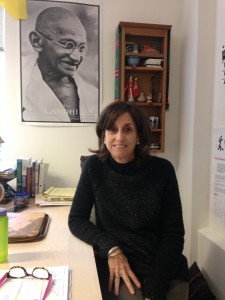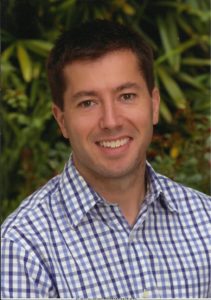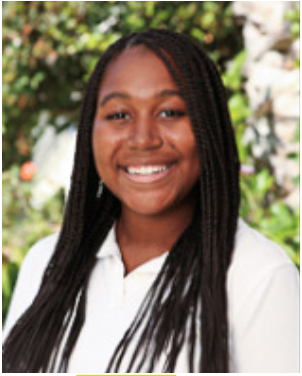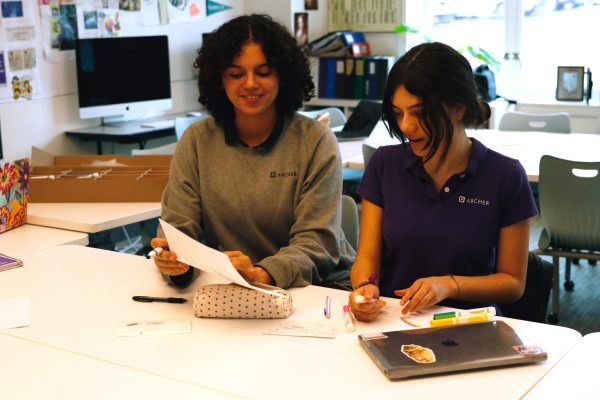Going beyond statistics: Archer diversity conversations on the rise
The 2015-2016 Ambassador Leadership Team (missing Ari Brown ’16 and Alyssa Downer ’17) pose in front of the Maypole. Their mission is to create a welcoming environment for perspective Archer families. Photographer:
When it comes to diversity on the campus of a private, independent school, The Archer School for Girls is above the national enrollment rate of students of color. Dean of Students Travis Nesbitt says the school takes diversity very seriously.
Archer’s Fast Facts states that students of color make up 39 percent of the population. Additionally, “students come from 141 different elementary and secondary schools and from 86 different zip codes throughout the city.”
Archer is 10 percent above the national mean for enrollment of students of color, according to the most recent statistics from the National Association of Independent Schools (NAIS). The school’s student population on campus continues to rise due to Archer’s ongoing commitment to diversity.
“I don’t know if there’s ever enough diversity,” Nesbitt said. “I think that we’re certainly making a conscious effort to prioritize diversity, but there’s always room for improvement.”
Simply raising the diversity percentage is only one factor for making the on-campus experience for students of color positive. From diversity clubs to school-wide conferences, Archer works to unify the whole student body.
Ambassadors for Change
The Ambassador Leadership Team (ALT) is one of Archer’s main forms of outreach. The students and administrators involved work throughout the year to encourage families to join the Archer community.
 Alyssa Downer ’17 is one of the 11 members of the ALT.
Alyssa Downer ’17 is one of the 11 members of the ALT.
“When people think of diversity, they think of cultural diversity,” Downer said.
She has had parents and students of color approach her after panels to ask how diverse the school actually is in terms of racial diversity.
“I feel like it’s a fear of theirs to talk about how diverse we are, when it’s a very good thing. We have so much diversity here on campus that we need to be proud of how high the percentage [is],” Downer said. “But they just revert back to the zip codes or feeder schools, but [diversity is] something they really need to advertise.”
However, according the Director of Admissions Felicia Paik, the zip codes are noted for a reason.
“It is a reflection of all the different neighborhoods that we have in Los Angeles. We have a reach from all of Los Angeles that represents different neighborhoods,” Paik said.
Paik says that all the members of ALT are dedicated to the purpose of the group and aspire to be truly representative of Archer’s diverse campus.
“We look to create a diverse group because we want the team to represent the student body that we have here,” Paik said. “When the Ambassador Leadership Team meets prospective families of all kinds, of all types, from all different parts of L.A., we want those families to feel that they have met somebody who is similar to them or has some common attribute.”
The Role of a Diversity Club
Students and teachers alike identified participation in diversity-based clubs as a significant part of their experience at Archer.
For anyone who is beginning to navigate their way through the multitude of club opportunities, the Diversity Club serves as an umbrella and starting point for learning about students’ differences.
“To educate is our main goal. We don’t want Diversity [Club] to be a judgmental space,” one of the leaders of the Diversity Club, Ava-Rose Beech ’16, said.
Other clubs include the Gay Straight Alliance (GSA), Black Student Union (BSU) and Best Buddies.
The Asian-American and Pacific Islander Culture Club is one of Archer’s newest diversity clubs led by sophomores Portia Freeman and Sydney Shintani. The two chose to center the club around the history of their heritage – Freeman identifies as a quarter Filipino and Shintani identifies as Japanese.

“I feel like we talk about that [current events] a lot in all of our classes anyway,” Freeman said.
Recently, the club has started to incorporate some media by discussing the television show “Fresh Off The Boat” and the Disney animation “Mulan.”
Involvement
Maintaining a consistent attendance throughout the year is a common problem for every club.
“We haven’t been getting a lot of students from different grades, but we want more,” Freeman said.
After several efforts were made to strengthen the dynamic of the club, Hermanas Unidas ceased all meetings back in November due to lack of interest from the students.
“I know I didn’t want to put my effort into something nobody went to,” one of the leaders of Hermanas Unidas, Josie Garcia ’18 said.
Being an active ally in the Black Student Union has helped Garcia build a structure for how she wants the Hermanas Unidas meetings to look like in order to continue moving forward.
“I want it to be a support system for Latinas to be able to share their struggles and inform people who are not of Hispanic heritage,” Garcia said.
Another struggle expressed by club leaders was the lack of participation from middle schoolers.
Becoming Diversity Coordinator
In the 2015-2016 school year, for the first time in Archer history, Archer created the Diversity Coordinator position, a role dedicated to overseeing diversity-related activities.
“It is a role that is significant and visible and will bring about real change on campus,” Nesbitt said.

This year’s Diversity Coordinator is history teacher Beth Gold.
“My number one goal is to make conversations about diversity more frequent, more transparent, more comfortable and more ongoing,” Gold said.
She attended Occidental College, which she liked because of its location and diverse culture.
Her immersion in Occidental’s environment drew her to being more active on Archer’s campus.
This year, some of Gold’s projects have included supporting any diversity initiatives on-campus that are student generated, figuring out how to get more representation of diversity on Archer’s home page and meeting with the department chairs to encourage integrating diversity into the curriculum, especially in science and math classes where these topics are not common.
Archer’s goal is to make sure that its students are receiving a full and well-rounded experience at school, Gold said. Bringing new conversations and perspectives encourages that type of learning.
Administrative Perspective

Nesbitt works with Gold and student leaders to keep conversations about diversity relevant after events such as Archer’s annual Diversity Conference.
One of the goals Nesbitt would like to achieve is to create an open space for students to raise issues and ask questions.
Nesbitt said that acknowledging diversity is a priority. Being proactive and seeking out students and faculty who have already expressed interest in these conversations will help move this idea along, he believes.
“I think it’s about empowering all students to shape the culture. It’s not that there is this dominant culture that is Archer, and you fit in to it or you don’t. Everyone comes into the community hopefully feeling empowered to shape that culture,” Nesbitt said.
An important part of making sure that learning and change can take place in a student’s education is the rapport between the faculty and the student, he said, especially if a student can see herself in an adult in the community, or at least can empathize with them.
Nesbitt has also expressed interest in bringing in Archer alumni to serve as mentors for current students. They would be a resource for girls who are interested in how diversity can be addressed beyond Archer’s walls.
Learning Beyond Archer
Outside the walls of Archer, students and teachers have pursued further education about diversity.
The National Diversity Conference hosts two annual conferences – Student Diversity Leadership Conference (SDLC) and the People of Color Conference (PoCC) for students and teachers respectively.
“We continue to send girls to the National Diversity Conference and help them bring back lessons that they’ve learned and strategies and techniques and contacts,” Nesbitt said.
Two past attendees, Marcela Riddick ’16 and Anika Bhavnani ’17, said that SDLC and PoCC have become hubs for extensive learning and have helped members of the community grow and return with new insight.

“At SDLC, I made a lot of great connections with a lot of different people,” Bhavnani said. “Being able to be around people that are like you, you just build that connection whether you realize it or not.”
All past attendees stated that these experiences are beneficial for people that are interested in exploring other cultures, as well as their own.
“I like going to those conferences and listening to what other people’s experiences are because everyone has their own experience and perspective, and that just gives us a broader world view,” Gold said about her time chaperoning at SDLC and participating in the PoCC. “I feel like I’m always learning,”
Despite all of these indicators of progress, Riddick said that she is not sure if these conversations will continue.
“You can incorporate diversity into every classroom. We shouldn’t have to wait for Diversity Day or a lunch club,” Riddick said. “Any type of diversity is worth talking about.”

Shelby Mumford graduated in 2016. She began to write for the Oracle staff in 2015 and was a member of the swim team and the Speech and Debate team. Shelby...








